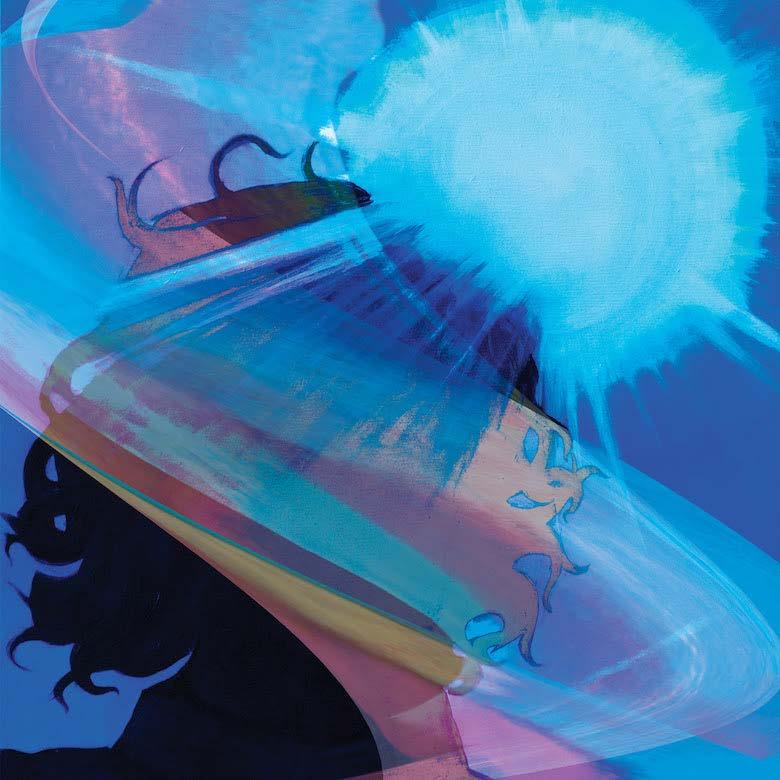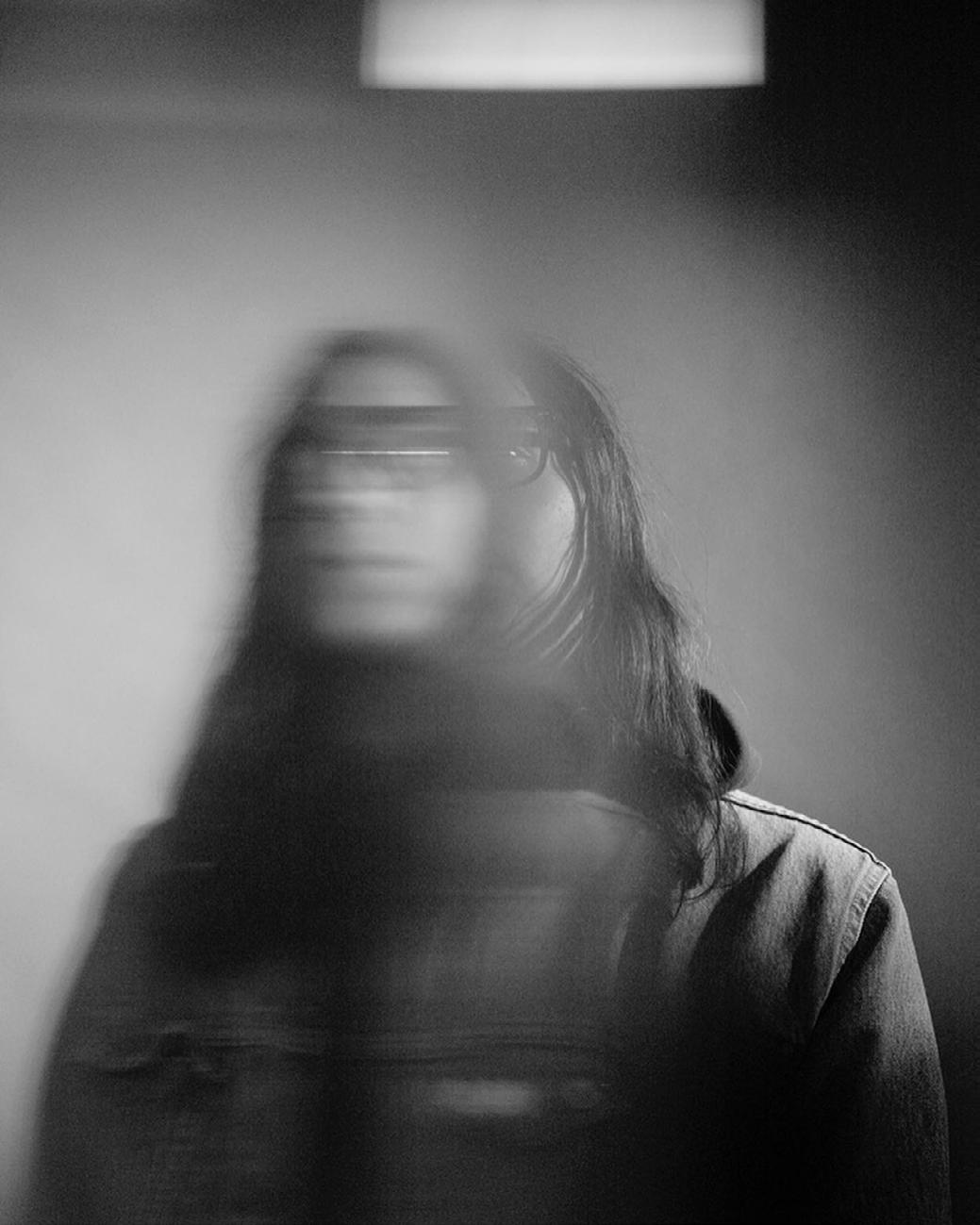
7 minute read
ZOON
After some technical difficulties, we were finally able to reach Daniel Monkman, the creator behind the transcendent musical project Zoon. The name Zoon comes from the word, Zoongide-ewin, an Ojibwe term for bravery and courage. Through subtle narratives, Zoon’s songs revolve around his life and experiences as a an Indigenous Youth in Canada. He has not come to live the easiest life, even when he went to record demos for this record his gear had been stolen from him, forcing him to be at his most minimal with a single guitar and delay petal. Even while only in his mid-20s he has seen and experienced a lot and brought all of his emotions and life experiences forward into the sounds that are Zoon and explored on his upcoming record, Bleached Wavves.
“It’s been quite a journey trying to put this record out,” Daniel Monkman stated, acknowledging that there was finally an official release date for his music, “Even on tour two years ago people would be like, ‘Hey man, the songs you are putting online are sounding pretty good, when are you going to put out a full length?’ I kept putting it off and a couple summers ago I decided to actually do this and now everything is playing out.” With the release set for June 19th, 2020, it was surprising to learn that the ideas for these songs started coming together back in 2016 and 2017. Monkman stated that it was around this time that he actually started finding clarity for what he was trying to do and say with the music, “Before it was a lot of random songs here and there, but there was a big push with all of these other songs in a month ... It was more of a feeling. I wanted it to feel good together.”
Advertisement

While many might expect the sound of Zoon to come from a lot of shoe-gaze influence, they would be surprised to learn that a lot of the structure of Bleaches Wavves comes from listening to movie scores as well as other ambient music. Going into the songs there was this background acknowledgement that it could would like a score in the sense that it had that kind of narration, or that there was room to play with only having instrumental tracks among those with lyrics, “It’s kind of like a concept album too,” Monkman commented, “Right now we put out singles, what we thought would be the most digestible. When you hear the rest of the songs on the record you’ll get to hear the score side. There’s a lot of textures. Even songs that don’t say anything, just instrumentals, are there to comfort you.” While each of the songs can be listened to on their own candidly, there’s more of an experience with a focused front-toback listen.
Scores may have held out a hand of inspiration for a large portion of the music, but when it came to Monkman’s discovery of shoe-gaze kind of music, there is only one true authentic form of it all that showed him the potential of textured sound, and that’s My Bloody Valentine. With how expansive the genre is now, I was surprised to learn that there’s very little shoe-gaze that Monkman actually listens to, “Growing up in a small town, I wasn’t aware of shoe-gaze music. It took me a while because how I did come across it was somewhat blurry,” Monkman briefly mentioned how he had been abusing different substances while in Junior High and High School during his founding years. A friend had reminded him that they had showed him My Bloody Valentine in Junior High, “At the time I didn’t really like it that much. I thought it was too abstract. I can’t even digest any of these sounds, and it wasn’t until a few years later when I was coming out of High School that I re-listened to it. I was like, ‘This is so beautiful, this makes so much sense to me, I love all the sounds,’ it kind of gets me away from my head. It made me feel like this was an alternate way to express myself.”
After that, there was not a lot in the shoe-gaze genre that spoke to Monkman, at least not in the same way. He notes how a lot of the genre in its modern form is gear heavy, focuses too much on expansive pedal collections, and different effects, “I only listened to MBV and I know they only have two records but it was all I listened to,” He laughed at that acknowledgement before expressing how he felt Kevin Shields did the whole genre best, the “proper way.” Kevin Shields is all about guitar tones and getting out the fuzz in his sound, something that Monkman admires and enjoys most, “That’s what I want to preserve. Luckily enough, some people like to notice that.” He continues to note that there is one pedal in particular that has been special to him. It’s why people always lean in and comment on the fact that he is able to make the sounds that he is making with it and it’s a classic delay pedal something that has enabled him to be minimalist but still stand out. Now, he has upgraded knowing that to remain minimal it is a lot less tedious to have to get down and fix his pedal between every song but remains with a minimal set up.
With their live sets, Monkman has a goal of bringing the album to life to the audience. With the musicians that he has working on Zoon with him, they started discussing album art and music videos, compiling footage to make a certain style that would work with the music. It’s a large part of the reason that Monkman dreams of being able to get a projector for their live performance in the future. It would be another key feature to allow people to truly experience the music and feelings that come from the music. When preforming live, he doesn’t like to talk between sets, and likes to keep things flowing, “People don’t clap, they don’t even know when we start a song or finish one. I want that to be a visual so we can put imagery of First Nations people and still have it there rather than talk into a mic and bring up those issues. People can talk to me after, but when it’s the live experience I want it to just be that and people can see the imagery.”
Monkman reflects on seeing A Tribe Called Red it being the first time that he had seen nonIndigenous people running around in Pow-Wow T-Shirts while listening to Pow-Wow music, “It was so amazing. They haven’t even say anything about it but I just felt so connected.” It’s that part of where there were no words necessarily said that resinated with him, “I haven’t been able to speak publicly so having a projector would be a perfect idea for us.” Having visuals is something that is important for the representation of Zoon all together. Everything that they have put together has come organically as rthey were experimenting, enabling Monkman to be his most comfortable, “I haven’t talked about my art in many years. I stepped away from it for several years. So, this is the first time I have really talked about my art,” he states.
In the process for making some of the visuals for Bleached Wavves, Monkman was able to have a deeper conversation with Drew Rutty, the videographer behind the music video, “Light Prism” As it turns out, the week prior to the music video being recorded Monkman had asked his bassist to leave stating, “We weren’t on the same page.” Through the scene, Monkman was already familiar with Rutty but when they got together in this context they clicked and were able to get all of the visuals done before the other members of Zoon showed up.
“It’s hard to put your heart and soul into a project and show it to the world. You want people to respect and understand. For a lot of people, they drink and stuff and I just don’t like having that stuff around. It’s very specific and challenging to find the right people. Anytime that something has gone wrong in my life alcohol or drugs have been in the picture. I promised myself that if I were to do music again I would be genuine and show positivity through my music,” A statement that Monkman made noting that he wanted to shatter the idea of living in a rock and roll illusion as a group of musicians.
Now, Daniel Monkman prepares for the final days before the released of Bleached Wavves. It’s a record that’s been the making for four years now. The record is set to be released on June 19th, 2020 and is full of true, genuine feeling. There is no doubt that every aspect that Daniel Monkman approaches in his art is thoughtful and well considered. Giving his closing remarks, Monkman states, “I hope people feel good when they listen to it and look up First Nations people. In one of the songs there’s a hand-drum and maybe people will notice that and ask ‘What’s rthat instrument?’ and do some research.”






